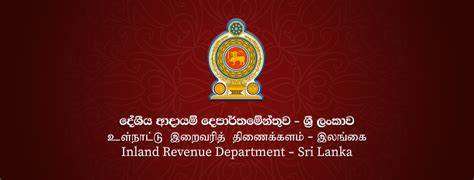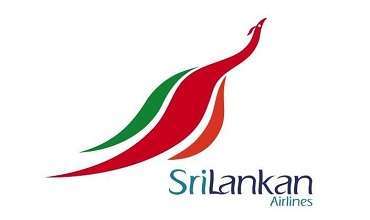Demystifying a trade-off between business realities and health risk: a measurement approach to encircle all stakeholders
The Preamble
In the backdrop of COVID-19 (Corona Pandemic), plethora of news and awareness is focusing on health education in the interest of national health along with the intention of safeguarding the Constitutional right to healthy environment for every citizen.Local Media deeply discusses statistics about active cases, critical conditions, recovered, and even deaths from Corona Pandemic. However, with still scant discussions, it is worthwhile to decipher the impact of the deadly virus on social distancing. While some consider distancing from fellow friends, colleagues and one another as an opportunity for self-time alone and social isolation, there is measurable impact on organizations which include business enterprises, financial services, advisory services, utilities, retailers with further emphasis on all forms of stakeholders in a supply chain of goods and/or services in the country.
Customers and end-consumers / end-users are encouraged to exercise a “non-touch technique” or non- tactile approach to promote healthier practices in society and during associations among one another. Therefore, three typical cases namely; grocery retailers, banking services and advisory work services take this non-tactical approach amidst the health risk situation with the intention of minimizing contact time among individuals. In spite of these services being readily available and supplied, citizens still seem to assume only a nominal benefit from it and does not understand the real benefit(s) yielded to citizens and the organization supplying the services too.
In this backdrop, it is useful and vital to measure the extent to which the technology and Information Communication techniques have vitally facilitated the benefits to both organizations and its stakeholders. It is certain that technology is the facilitator of such convenience processes and the Government will further benefit if the gains and losses from such mechanisms can be quantified. This approach is also in the interest of the providers of essential services. In this scenery, the landscape of the enterprise organizational transactions will encounter a pattern shift in management and legal aspects inclusively where enterprises and the legal framework intersect.
Business and Legal perspectives
Therefore, from the company point of view and the Government there are organizational benefits that are realized while transacting with the general public. Ideally stakeholders may perceive such outcomes of online business transactions as a benefit to them, overlooking any dis-benefits they may be realized throughout phases of the project lifecycles. While at crucial time the spotlights are on medical concerns relating to the pandemic the managerial implication COVID-19 had brought on organizations, stakeholders and the wider nation may be discounted. Thus alarming a necessity to effectively measure the benefit(s) and thereby manage resources of the country appropriately and moderately during a pandemic situation with such foreseeable and unforeseeable risks.
On the flip-side the legal landscape of the country relating to English law-based electronic transactions interprets the current business dimension in a purposeful manner. In compliance with the objectives of Electronic transaction Act 19/2006 the online businesses facilitate domestic e-commerce by eliminating legal barriers (S 2a), promote efficient delivery of government services by means of electronic filling of documentsand reliable forms of communications(S 2c) and encourage the use of reliable forms of electronic commerce (S 2b). It can be reasonably justified that the business transactions on technological platforms are in align with the law passed by the Parliament of Sri Lanka in the context of being governed and regulated by the Act 19/2006 even after the lapse of more than a decade.
E governance and benefits
As Sri Lanka on par with other nations cradle electronic governance (e-governance) methodologies the ‘business to consumers’ and ‘government to citizens’ models are turning up to technology platforms. In the limelight of corona and its destruction on civic lives e- governance project benefits are being discussed, nevertheless in limited thresholds. Online transaction benefits approach is categorized into benefit identification, benefit realization planning, benefit control and benefit realization. In this manner, banking services are encouraging online money transfers, mobile alerts, call to inquire bank balances, e-statements among others to facilitate the non-touch banking method through electronic transactions. Certainly the government foresee a tangible benefit in this process addressing benefit identification and realization planning as at now. It is still required to enlighten citizens of the extent to which benefits are realized while the gain(s) of the project is actually felt.
Measurement approach
In the practical case of online business transactions the organization and government consistently emphasize on health benefits. The materialization of the benefit depends on adoption of non -touch techniques and customer engagement with government regulationsin the light of the risky environment. While the business cases are outwardly only an indication of hopeful futuristic returns, there are much timely real benefits and gains to the enterprises, customers and country at large. In measuring such benefits the following method can be used. The approach is rarely practiced (low), moderately practiced (medium) and frequently (High)
Figure 1: Novel approach to quantify the measurement of health benefits during health risk pattern 1
|
|
Customer engagement with regulations |
|||
|
Low |
Medium |
High |
||
|
Non-touch business approach |
Low |
1 Very low Health |
2 Low Health |
3 Moderate Health |
|
Medium |
2 Low Health |
3 Moderate Health |
4 High Health |
|
|
High |
3 Moderate Health |
4 High heath |
5 Very high Health |
|
Source: Author
On an alternative business case if we map customers’ isolation with operation automation as identified benefits the materialization of desired benefits can be measured at five (5) different categories. Stated value is rarely observed (Low), moderately observed (Medium) and frequently (High).
Figure 2: Novel approach to quantify the measurement of health benefits during health riskpattern II
|
|
Customers’isolation |
|||
|
Low |
Medium |
High |
||
|
Operation Automation |
Low |
1 Never |
2 Seldom |
3 Sometimes |
|
Medium |
2 Seldom |
3 Sometimes |
4 On most occasions |
|
|
High |
3 Sometimes |
4 On most occasions |
5 Always |
|
These business cases and the benefit measurement are supported by formulae and mathematics. In an environment down-turn, the identified benefits of electronic transactions will only be progressively realized over time. Hence the benefit planning and controlling should be wisely managed. In the times of Corona pandemic or any similar crisis this measurement approach to quantify the benefits, outcomes and gains will be an invaluable resource of knowledge.
The author is a Senior Lecturer and a researcher in Organizational Benefit Management in Projects
- By: Dhinesha Ruwanthi Perera
-
Still No Comments Posted.

















Leave Comments